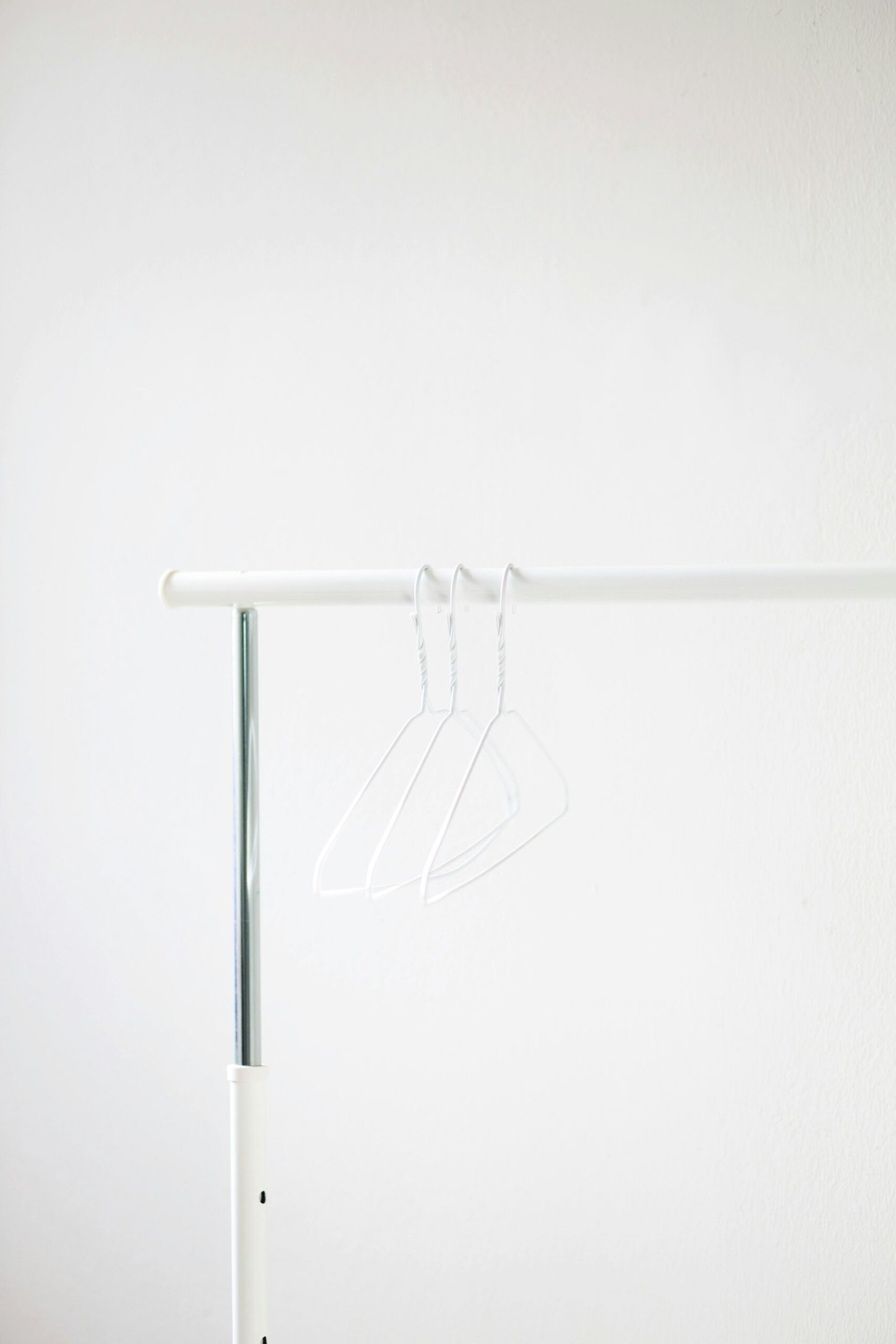Introduction to Slow Fashion
In recent years, the fashion industry has experienced a significant transformation, with the rise of the slow fashion movement standing in stark contrast to the prevalent fast fashion model. Slow fashion emphasizes a conscientious approach to clothing consumption, prioritizing sustainability, ethical production, and long-lasting quality over the rapid turnover of trends. As consumers become increasingly aware of the environmental and social consequences of their purchasing habits, slow fashion has emerged as a necessary response to the prevailing practices dominating the industry.
The fast fashion industry has been criticized for its detrimental effects on both the environment and society. The production of cheap, disposable clothing often involves exploitative labor practices, contributing to poor working conditions and adverse impacts on the workforce. Additionally, the high volume of garments produced leads to excessive waste, as discarded clothing fills landfills and exacerbates pollution. This relentless cycle not only harms our planet but also undermines the uniqueness and individuality of personal style, as trends often blend into a sea of sameness.
In contrast, the principles of slow fashion advocate for a purposeful, reflective approach to clothing choices. It encourages consumers to invest in high-quality, timeless pieces that transcend fleeting trends, fostering a sustainable wardrobe that resonates with their personal style. By supporting ethically made garments and embracing durable materials, individuals can significantly reduce their ecological footprint while celebrating fashion as an art form, rather than merely a commodity. The journey towards a slower, more intentional approach to fashion begins with a commitment to understanding the value of thoughtful consumption, laying the groundwork for the importance of a capsule wardrobe that embodies these values.
What is a Capsule Wardrobe?
A capsule wardrobe refers to a thoughtfully curated collection of essential clothing pieces designed to be versatile and timeless. Typically comprising 20 to 40 items, a capsule wardrobe is intended to simplify the process of dressing. The concept revolves around the idea that by possessing a limited selection of high-quality garments, one can enjoy a streamlined approach to fashion while maximizing the combinations available for different occasions.
The primary purpose of a capsule wardrobe is to reduce decision fatigue that often accompanies having an overflowing closet. With fewer options, individuals can easily select outfits that suit their needs without feeling overwhelmed, thereby enhancing daily productivity. Additionally, the act of narrowing down choices encourages thoughtful purchasing decisions, emphasizing quality over quantity in one’s fashion choices.
Creating a capsule wardrobe also positively impacts personal finances. By focusing on a core collection of versatile pieces, individuals are less likely to engage in impulsive shopping, which can lead to financial strain. Over time, this strategic approach to clothing helps save money and fosters a more conscious relationship with fashion consumption.
Moreover, the notion of a capsule wardrobe aligns itself with the principles of sustainability. In an era marked by fast fashion’s detrimental effects on the environment, adopting a minimalistic approach to clothing can lead to a significant decrease in waste and resource consumption. When individuals invest in timeless pieces that can be mixed and matched, they contribute to reducing the overall demand for new items, thus promoting a more sustainable lifestyle.
In summary, a capsule wardrobe embodies the essence of intentional fashion, focusing on quality, versatility, and sustainability. By embracing this concept, individuals can streamline their wardrobes, minimize their ecological footprint, and enjoy a more organized approach to dressing.
Identifying Your Personal Style
Understanding and identifying your personal style is a foundational element in building a capsule wardrobe. This process not only aids in curating a selection of clothing that resonates with you but also ensures that your wardrobe aligns with your lifestyle and personal values. The first step in this journey is to assess your lifestyle needs. Consider your daily activities: Do you work in a professional environment, or is your routine more casual? Your wardrobe should reflect your day-to-day life, allowing you to feel comfortable and confident in your attire.
Next, seek out outfit inspirations that resonate with you. This can involve browsing through fashion magazines, online platforms, or social media channels. Pay attention to the outfits that capture your interest and examine the common threads among them. Are there specific colors, patterns, or silhouettes that repeatedly attract your attention? Taking notes or saving images can provide tangible examples of styles that resonate with your personal aesthetic.
Additionally, engaging in self-reflection is crucial during this phase. Ask yourself questions about your values and what messages you wish to convey through your clothing. Are you inclined towards sustainability, or do you prefer luxury materials? Understanding the principles that guide your fashion choices will help you curate a wardrobe that reflects your individuality. Creating a mood board can also be an effective visual exercise. Collect images, textiles, and colors that speak to you, forming a collage that represents your style direction. This not only serves as a reminder of your unique preferences but also aids in making mindful choices when selecting pieces for your capsule wardrobe.
By exploring your lifestyle needs, seeking outfit inspirations, and engaging in self-reflection, you will be well-equipped to identify your personal style. This clarity is vital as you embark on the journey of building a cohesive and functional capsule wardrobe tailored to your aesthetic and lifestyle aspirations.
Choosing the Right Pieces for Your Capsule Wardrobe
Building a capsule wardrobe is a deliberate process focused on minimizing choices while maximizing style and functionality. When choosing the right pieces, it is essential to prioritize quality over quantity, ensuring that each item is crafted from durable materials. Start by selecting key clothing categories, beginning with tops. Opt for versatile options such as classic tees, button-down shirts, and knitwear that can easily transition from casual to more formal settings.
Next, consider your bottoms. A well-fitting pair of jeans, tailored trousers, and a pencil skirt can serve as the foundation for numerous outfits. The idea is to invest in pieces that not only fit well but also complement various tops. Additionally, incorporating outerwear into your capsule wardrobe is crucial, as it can dramatically influence your overall look. Choose a structured blazer, a timeless trench coat, and perhaps a cozy cardigan to provide options for layering.
Accessories should not be overlooked; they play a vital role in enhancing your wardrobe’s versatility. A classic handbag, a couple of scarves, and minimalist jewelry can elevate any ensemble without overwhelming the aesthetic. When selecting these items, keep in mind a cohesive color palette. Neutral shades tend to work well together and can be easily paired with more vibrant accent pieces, allowing your wardrobe to maintain a sophisticated and harmonious look.
Fabrics are another critical consideration in curating your collection. Opt for natural fibers, such as cotton, linen, and wool, as they offer comfort and longevity. These materials tend to hold up better over time, aligning with the principles of slow fashion. By focusing on these key categories and adhering to a mindful selection process, you can effortlessly build a capsule wardrobe that reflects your personal style while promoting sustainability.
Sustainable Fabric Choices
When curating a capsule wardrobe, the selection of fabrics plays a pivotal role in reflecting one’s commitment to sustainability. The shift towards slow fashion underscores the necessity of choosing materials that not only enhance personal style but also align with eco-conscious values. Among the leading sustainable fabric options are organic cotton, Tencel, hemp, and recycled fabrics, each offering unique benefits while minimizing environmental impact.
Organic cotton stands out for its cultivation process, which avoids synthetic pesticides and fertilizers. This approach not only supports healthier soil but also safeguards the biodiversity around cotton farms. As the global demand for cotton continues to rise, opting for organic alternatives can significantly reduce the carbon footprint associated with conventional cotton production.
Tencel, a fiber derived from sustainable wood sources, exemplifies effective resource management. The production of Tencel employs a closed-loop system, which recycles water and solvents, minimizing waste and energy usage. With its soft texture and excellent moisture-wicking properties, Tencel is an ideal choice for versatile clothing items in your capsule wardrobe.
Hemp is another outstanding sustainable fabric, known for its durability and low environmental impact. Cultivated without the need for chemical fertilizers or pesticides, hemp not only enriches the soil but also consumes less water compared to conventional crops. Its natural resistance to pests makes hemp a sustainable option that can thrive in diverse climatic conditions.
Lastly, recycled fabrics, made from post-consumer waste, represent a crucial step in reducing landfill contributions. By repurposing materials that would otherwise be discarded, recycled fabrics help to close the loop in textile production, promoting a circular economy that aligns with slow fashion principles.
Incorporating these sustainable fabric choices into your capsule wardrobe not only enhances its quality but also contributes to a more responsible and eco-friendly fashion landscape.
Tips for Maintaining Your Capsule Wardrobe
Maintaining a capsule wardrobe requires attention to garment care and thoughtful organization. A key strategy for prolonging the life of clothing is through proper care. Each fabric composition has specific care instructions; thus, familiarize yourself with washing, drying, and storing guidelines to prevent wear. For instance, natural fibers, such as cotton and linen, may fare better with hand washing or cold cycles, while delicate fabrics, including silk or cashmere, often require dry cleaning or gentle handling. Investing in high-quality detergents and fabric care products can contribute to the longevity of your garments.
Storage is another significant aspect of maintaining a capsule wardrobe. Utilize sturdy hangers for blouses and shirts to maintain their shape, and opt for drawer dividers to separate small items like socks and underwear. When storing seasonal clothes, ensure they are clean and completely dry to prevent mildew and pests. Consider using breathable garment bags for items that need extra protection. For those living in areas with extreme temperature changes, climate-controlled storage can be beneficial to preserving the integrity of your clothing.
As seasons change, adapting your wardrobe while adhering to the capsule concept helps keep your selection fresh and versatile. Rotate pieces based on the weather and occasion, and keep within the established color palette for easy mixing and matching. Additionally, alone resorting to purging items can create space for occasional new pieces that complement your current collection. Focus on quality over quantity for these new additions, ensuring they align with your overall style and capsule philosophy. This approach encourages sustainable fashion practices while keeping your wardrobe functional and stylish.
Dealing with Consumerism and Fast Fashion Temptations
In an era dominated by consumerism, maintaining a slow fashion mindset can prove to be a significant challenge. Fast fashion brands continuously bombard consumers with ever-changing styles and promotions, creating an environment where impulse buying becomes the norm. To navigate these pressures, individuals can adopt several practical strategies aimed at promoting mindful consumption.
One effective strategy involves the creation of a wishlist. By consciously selecting clothing items that one genuinely desires, a shopper can resist the fleeting attraction of impulse purchases. This approach encourages individuals to think critically about their choices, allowing them to evaluate whether a piece truly aligns with their personal style and the core principles of slow fashion. Additionally, this process can help avoid unnecessary clutter while paving the way for sustainable wardrobe choices.
Setting shopping limits is another crucial tactic in the fight against fast fashion temptations. Establishing a budget not only aids in financial management but also cultivates a sense of responsibility towards one’s clothing consumption. It can be beneficial to designate specific periods throughout the year for shopping, focusing on quality over quantity. By sticking to these limits, one can make more conscientious decisions regarding purchases, ultimately fostering a greater appreciation for the garments acquired.
Understanding marketing tactics employed by fast fashion brands is essential in combating their influence. Many brands utilize psychological strategies to create urgency, leading consumers to make hasty decisions. By recognizing these tactics, individuals can develop a more critical perspective when engaging with advertising, making it easier to resist immediate gratification. Adopting a mindful approach to shopping empowers consumers to prioritize sustainable practices, creating a more intentional and responsible relationship with fashion.
The Importance of Ethical Brands
As we delve into the concept of slow fashion and the creation of a capsule wardrobe, it is crucial to acknowledge the significance of supporting ethical brands. Ethical fashion has emerged as a vital component in shaping a sustainable future for the garment industry. An ethical brand can be characterized by its commitment to fair labor practices, transparency within its supply chain, and environmental responsibility. These attributes not only enhance the quality of clothing but also ensure that the impacts of production are positive for both people and the planet.
Fair labor practices are at the heart of ethical fashion. Brands that prioritize this principle ensure that workers are paid fair wages, provided with safe working conditions, and offered respect and dignity in their roles. This not only empowers workers but also promotes a culture of equality and social justice. Transparency in supply chains further exemplifies an ethical approach, as it allows consumers to understand where their garments are sourced and how they are produced. This transparency fosters trust between consumers and brands, enabling shoppers to make informed choices about their purchases.
In addition, ethical brands often take significant strides towards environmental sustainability. This entails using eco-friendly materials, minimizing waste through sustainable production practices, and promoting the longevity of garments with quality design. By embracing these principles, ethical brands have the ability to reduce their ecological footprint while contributing positively to global environmental initiatives.
For conscious consumers looking to build a capsule wardrobe for 2024, some noteworthy ethical brands include Reformation, Patagonia, and Everlane. These brands are recognized for their commitment to sustainability, ethical labor practices, and transparency. By supporting ethical fashion brands, individuals not only cultivate a stylish and functional wardrobe but also contribute to a more equitable and sustainable future in the fashion industry.
Conclusion: Embracing Slow Fashion in 2024
As we move into 2024, the principles of slow fashion become more relevant than ever. By adopting a capsule wardrobe, individuals not only streamline their personal style but also contribute to a more sustainable future in the fashion industry. The focus on quality over quantity allows for smarter shopping choices, ultimately leading to less waste and reduced environmental impact. A thoughtful approach to clothing selection fosters a deeper connection with each piece, encouraging mindful consumption and appreciation of craftsmanship.
Key takeaways from this exploration of slow fashion emphasize the importance of selecting versatile, high-quality garments that can be mixed and matched. Investing in timeless pieces allows individuals to be both stylish and eco-conscious, supporting brands that prioritize sustainability and ethical production practices. Moreover, undertaking the journey toward a capsule wardrobe encourages creativity in fashion choices while alleviating decision fatigue associated with larger wardrobes.
In addition to personal benefits, the broader impact of embracing slow fashion principles cannot be understated. By reducing fast fashion consumption, individuals contribute to a significant decrease in carbon footprints and promote a culture that values longevity and responsibility. The shift towards sustainable practices in clothing not only enhances personal style but also plays a vital role in preserving our planet for future generations.
As you embark on your journey towards a more sustainable fashion lifestyle in 2024, consider your wardrobe as a canvas for self-expression and a platform for ethical choices. Take actionable steps: evaluate your current clothing collection, seek out beloved brands that align with slow fashion values, and commit to making informed purchasing decisions. Together, we can foster a thriving slow fashion movement that celebrates creativity, sustainability, and authenticity.



